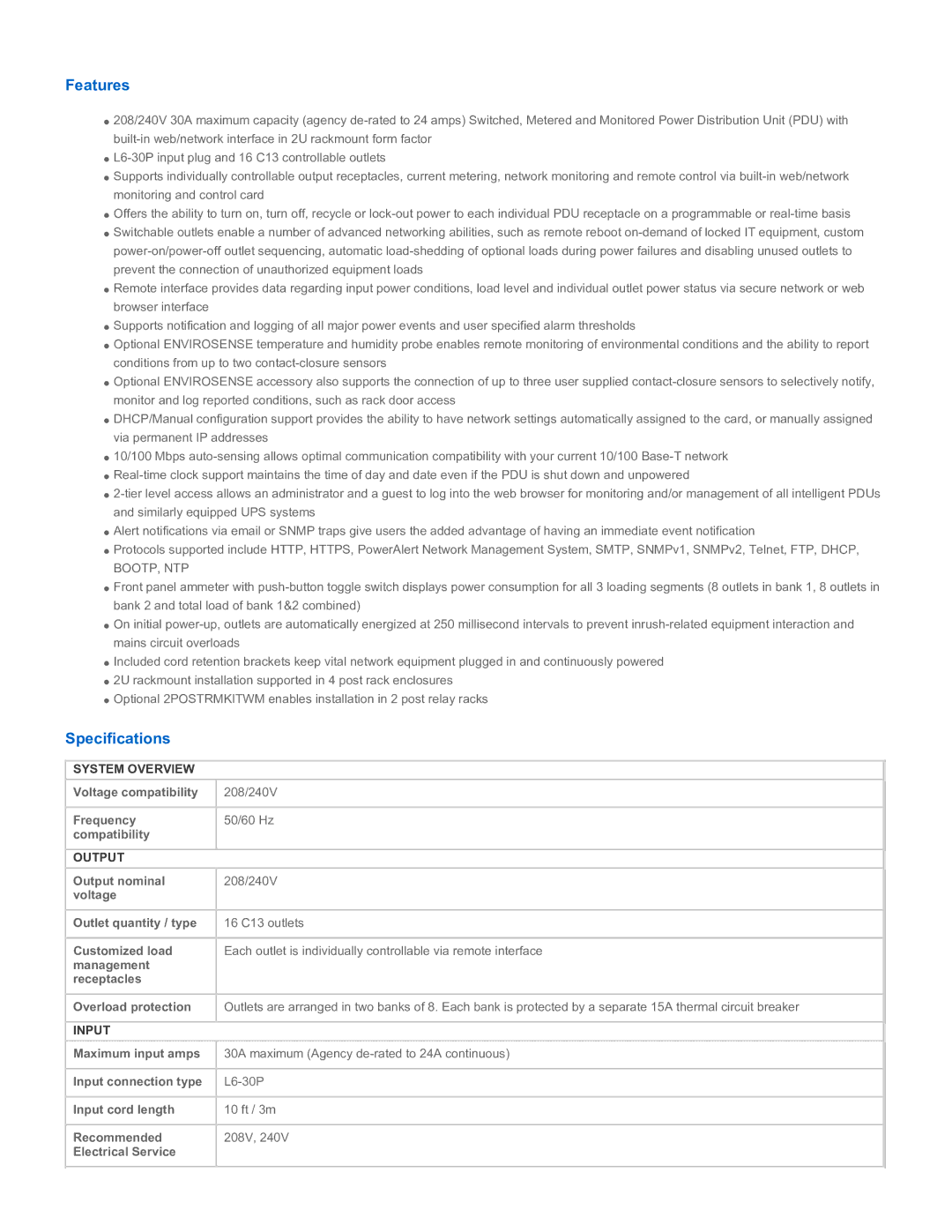PDUMH30HVNET specifications
The Tripp Lite PDUMH30HVNET is a powerful and highly versatile power distribution unit (PDU) tailored for high-density environments such as data centers, server rooms, and telecommunication closets. This device provides a reliable solution for distributing electric power to multiple devices while ensuring advanced monitoring and management capabilities.One of the primary features of the PDUMH30HVNET is its ability to handle high-voltage requirements. With a 30 amp rating and an input voltage of 200-240V, it supports a wide variety of equipment, making it ideal for powering high-performance servers, switches, and other networking devices. The eight output receptacles, combined with an IEC C19 input, provide users with plenty of distribution options to connect all necessary devices.
The PDUMH30HVNET stands out through its integrated network management capabilities. It comes with an advanced Ethernet interface that allows for remote monitoring and management of power consumption and environmental conditions. This feature is a game-changer for IT managers, as it enables them to monitor power loads in real-time, receive alerts on overloads, and analyze power usage trends over time. Furthermore, the device supports SNMP, HTTP, and Telnet protocols, making it highly compatible with various management systems.
Another significant characteristic of the PDUMH30HVNET is its built-in environmental monitoring features. It has provisions for connecting temperature and humidity sensors, helping organizations keep track of critical environmental parameters that could affect equipment performance. By maintaining optimal conditions, users can mitigate risks associated with overheating and ensure the longevity of their devices.
The rugged, steel housing of the PDUMH30HVNET contributes to its durability, making it suitable for demanding environments. Its standard 1U rack-mountable design allows it to fit seamlessly into server racks, saving space while maintaining efficient operation.
In addition to its powerful features, the PDUMH30HVNET is designed with user-friendliness in mind. It includes LED status indicators for quick visual assessments of power and network connectivity, ensuring that potential issues are identified promptly.
Overall, the Tripp Lite PDUMH30HVNET combines high-capacity power distribution with advanced monitoring and management technologies to deliver a reliable solution for managing power in densely populated IT environments. Its robust design, extensive features, and ease of use make it a preferred choice for professionals looking to optimize their power distribution strategy.

